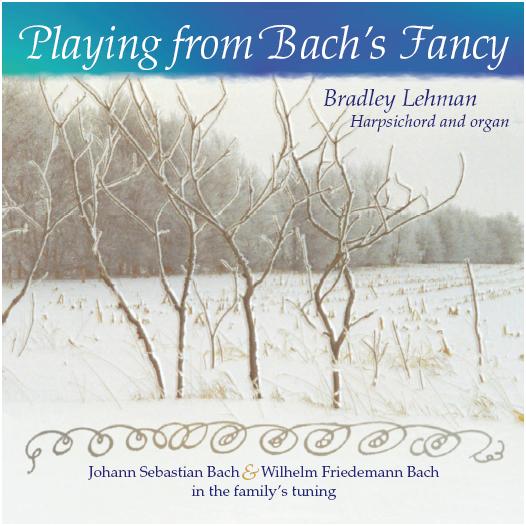 LaripS.com, © Bradley Lehman, 2005-22, all rights reserved.All musical/historical analysis here on the LaripS.com web site is the personal opinion of the author, LaripS.com, © Bradley Lehman, 2005-22, all rights reserved.All musical/historical analysis here on the LaripS.com web site is the personal opinion of the author,
as a researcher of historical temperaments and a performer of Bach's music.
History
The main historical background is in the
Early Music article "Bach's extraordinary temperament...", parts 1 and 2.
That article provides the necessary context for the following additional resources.
The historical and practical assumptions within my research
Also posted to
HPSCHD-L discussion group,
May 31 2006...stating these directly
in public, so there should be no confusion from anyone else's allegations of my assumptions!
- No major 3rd should be smaller than
C:E. Some others might be similar or the same, but none smaller.
- At least the natural 5ths from
C-G-D-A-E should all be of consistent size geometrically...i.e. from the
core of "regular" (aka meantone) tempering practice, with ordinaire
types of adjustments outside that core. With those regular 5ths, what's
good for violins/violas/cellos/violas da gamba on the open strings is
good for music: gentle and consistent tempering of the naturals. (And
Bach himself was a string player; what might he do as normal practice on
those instruments?)
- The C major scale is the natural
center of harmony, and the one that should be most regular
melodically...again from meantone practice.
- There cannot be any noticeably bad
5ths/4ths anywhere; all major and minor triads have to be usable.
- If the major 3rds in a temperament are
changing sizes, it has to be gradual and sound steady when we modulate
normally around the circle of 5ths. The easiest test is to play major
triads all the way around in both directions, like dominant or
subdominant progressions. No major 3rd should be grossly different from
the ones immediately on either side of it, in root motions by 5ths.
- Premise: the whole WTC is playable (and to be played) in a single
temperament without stopping to retune any notes between pieces. A good
solution makes everything playable and sufficiently interesting as well.
On fretted clavichords and organs, retempering between pieces is out
of the question anyway.
- Practical observation (from experimentation and from historical
models): it works well to have E:G# smaller than or equal to Ab:C, not
vice versa, because Ab is closer to C than G# is (C-F-Bb-Eb-Ab, vs
C-G-D-A-E-B-F#-C#-G#). The closer we are to the home key of C major,
the less tempered out of regularity we should be.
- Practical observation: it works well to have F to Bb slightly wider
than a pure 5th (as in Italian/French ordinaire practice), yielding a
decent major 3rd on F#:A#; the cost to Bb situations is much less than
the gain in A# situations, both melodically and in dominant harmonies.
- Practical observation: the major 3rd C#:E# must be rather good, as
Bach audaciously started the C# major prelude with an open exposed
occurrence; likewise plenty of G#:B#. Also on the subject of Db:F, this
interval is very important to music in the frequently used keys of C
minor, F minor, and Eb major, among others; it just doesn't do to have
this interval be nasty or obtrusive. Music (such as Bach's F minor
prelude/fugue of WTC 1, or the Eb major or the Bb minor p/f, or the much
later F major Duetto BWV 803) develops suddenly intrusive bumpiness on
the occurrences of Ab:C and Db:F, in temperaments like Werckmeister 3
where those major 3rds are the widest.
- Practical observation: the major 3rd B:D# must also be very good, for
straightforward use in E minor and A minor.
- Practical observation: if an organ is tempered with the WTC's
temperament (in at least one or more accompanimental ranks, if not the
whole instrument), it also has to handle the Chorton/Cammerton
transposing continuo parts for the compositions that were written that
way, playing the continuo in its originally notated keys; and this
affects the overall sound of the ensemble.
- Premise: Bach was clever enough (and musically enterprising enough) to
have understood all this and made full use of it before writing his
music, treating temperament issues as a musical virtue rather than an
unwelcome liability. The tuning style perhaps affected his creative
imagination, symbiotically, as to the types of themes and harmonic
adventures that made their way into his music; and they only pop back
out most clearly if we can re-create the same or similar tuning balance
to hear those effects directly. Set up the same conditions he likely
had at home or in his office, during the compositional process, to hear
how its sound can influence improvisation and composition.
- Practical observation: the best way to test all this is to play the
music directly. The compositions themselves tell us more than any paper
argumentation does, in their sound. [Test pieces]
Return...

|
|
v Introduction
v Articles
v FAQ
v Practice
v Theory
* History
- CPE Bach
- Lindley/Ortgies
- O'Donnell
v Etc
v Recordings



|




